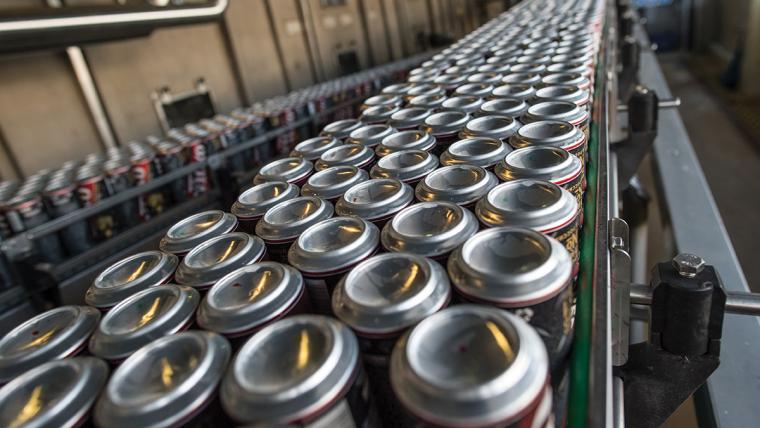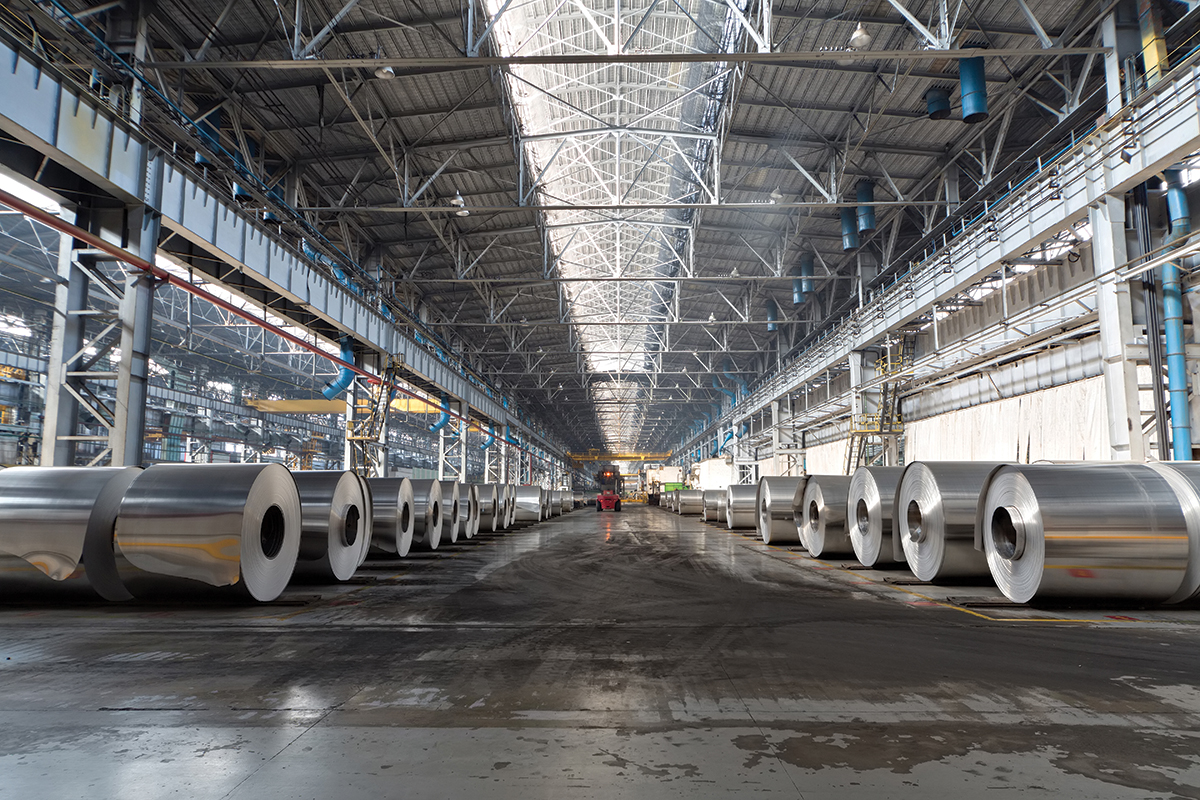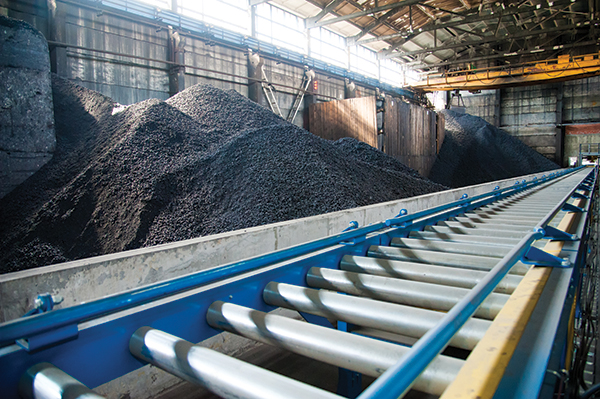
The aluminum industry is comprised of upstream, midstream and downstream market segments. The downstream market, which manufactures final finished goods, has seen significant investment activity in recent years and is driving the demand for growth in the other segments. The midstream sector, which converts aluminum into manufacturing feedstock such as aluminum rolls, is heavily active in site searches at the demand of their downstream customers and market potential. While there is a market demand for new investment in the upstream sector, including the production of aluminum from bauxite mining through the refining and smelting processes, these projects require significant capital, years of permitting and construction, and are highly price-sensitive due to commodity volatility.
Aluminum Production: A Recent History
 Volatility in aluminum prices over the past decade resulted in many starts and stops in investment, with aluminum site selection activity trailing the commodity booms and busts. Today, aluminum is at its highest price in over a decade: $3,021 per ton as of February 2022, with a 37 percent increase since January 2012. During this same period, prices bottomed out in November 2015 ($1,444 per ton) and April 2020 ($1,477 per ton). The pre-COVID lows were primarily driven by Chinese subsidies, while the 2020 low was due to COVID-19 worker shortages and a temporary decrease in demand for commodities such as automobiles. Aluminum prices have recently spiked due to a plethora of factors including supply shortages and geopolitical considerations of Russia and China, who are large global suppliers.
Volatility in aluminum prices over the past decade resulted in many starts and stops in investment, with aluminum site selection activity trailing the commodity booms and busts. Today, aluminum is at its highest price in over a decade: $3,021 per ton as of February 2022, with a 37 percent increase since January 2012. During this same period, prices bottomed out in November 2015 ($1,444 per ton) and April 2020 ($1,477 per ton). The pre-COVID lows were primarily driven by Chinese subsidies, while the 2020 low was due to COVID-19 worker shortages and a temporary decrease in demand for commodities such as automobiles. Aluminum prices have recently spiked due to a plethora of factors including supply shortages and geopolitical considerations of Russia and China, who are large global suppliers.
Decades ago, the U.S. was the leading aluminum producer in the world. Conversely, in 2020, China was the largest producer of primary alumina with over half of the world’s volume at 37 million metric tonnes followed by India (3.6 million metric tonnes), Russia (3.6 million metric tonnes), and Canada (3.118 million metric tonnes). China is also the largest consumer of aluminum. According to the U.S. Geological Survey (USGS) Mineral Commodity Summaries, the key import sources of aluminum for the U.S. from 2016 to 2019 were: Canada, 50 percent; the United Arab Emirates, 10 percent; Russia, nine percent; and China, five percent.
In March 2018, President Trump announced a 10 percent tariff on aluminum, citing Section 232 of the Trade Expansion Act of 1962. President Biden has since negotiated separate deals with entities including the European Union to apply tariffs to certain volume limits. The U.S., in general, has worked to become less dependent on imports, particularly those from China or Russia. Although the U.S. imports a less significant amount of aluminum from China, China’s massive production still drives prices down globally. The tariffs appear to affect more of the American downstream aluminum companies such as cans, cars and boats. As isolationism and supply chain restructuring continues, the U.S. will likely see continued production growth.
What’s Driving Demand?
Several factors are driving the demand for aluminum. While demand has bounced back tremendously from the pandemic, supply has not been able to keep up. As the COVID-19 pandemic continues to restructure supply chains, it will likely take several years to bring the aluminum supply back to stability. Somewhat similar to what the United States is seeing with the semiconductor shortage, it will require a generous lead time for companies to identify, construct and start up new aluminum production facilities. The siting process for these facilities is intense, and once the ideal spot is selected, the subsequent process requires a tremendous amount of effort to get through permitting, validate crucial utility infrastructure and map out logistics for raw materials and customer delivery.
The automotive industry is a major customer of the U.S. aluminum market, consuming an estimated 40 percent of supply in the U.S., according to the USGS. Advances in manufacturing technology have enabled the production of lighter aluminum to be used in vehicles, reducing the overall vehicle weight and associated emissions. Although overall automotive production is down due to inflation, chip shortages and other factors, aluminum will continue to be a key player in the sector, especially as electric vehicles continue to evolve and the demand for lighter vehicles increases.
Packaging comprises an estimated 21 percent of the U.S. aluminum market, with the beverage industry consuming a large segment of this demand. From a sustainability perspective, beverage companies are transitioning from plastic bottles to aluminum cans. Aluminum cans can be more easily recycled compared to other materials, creating a closed-loop system. According to The Aluminum Association, 45.2 percent of aluminum cans are recycled by consumers compared to 39.6 percent for glass bottles, and 20.3 percent for plastic bottles (PET). They are also lighter and more stackable for transport, reducing both inventory and logistics overhead for beverage manufacturers.
With industry-wide demand for aluminum at a record high, the International Aluminum Institute predicts that aluminum consumption will increase by 80 percent as soon as 2050, and recycled aluminum could meet half of that demand.
Tracking Aluminum Project Activity
 Due to the uptick in demand for aluminum products, aluminum production projects have a new sense of urgency when it comes to the site selection process. Projects before COVID, in the 2017-2019 timeframe, did not have the same pressure for speed-to-market as today’s investments. In today’s site selection process, companies are vying for contracts from downstream producers, promising that they can quickly deliver a high-quality product in the quickest manner possible.
Due to the uptick in demand for aluminum products, aluminum production projects have a new sense of urgency when it comes to the site selection process. Projects before COVID, in the 2017-2019 timeframe, did not have the same pressure for speed-to-market as today’s investments. In today’s site selection process, companies are vying for contracts from downstream producers, promising that they can quickly deliver a high-quality product in the quickest manner possible.
According to FDI Markets, there were a total of 306 aluminum announcements globally from 2017 to 2021. These projects represented over $18 billion in capital investment and almost 47,000 jobs. The average capital investment was approximately $60 million and created a median of 150 jobs. The U.S. had the most aluminum project announcements with 67 total over the last five years (2017-2021), followed by Germany with 17, and Brazil with 14. In 2021 alone, the U.S. had 25 of the 67 aluminum project announcements.
The top determinants for the project decision during this time were cited as domestic market growth and proximity to customer markets.
The most active project announcements during this period were that of the Ball Corporation. Per Mordor Intelligence LLP, “The global aluminum cans market was valued at $42.05 billion in 2020, and it is expected to reach $55.31 billion by 2026.” Ball’s announcements were largely due to the demand for beverage companies. The largest of their announcements was in Concord (Cabarrus County), North Carolina, where the company announced a $383 million investment and 220 jobs. This project will manufacture aluminum cans for an adjacent Red Bull facility, as well as other customers.
The largest single aluminum industry announcement in the U.S. during the past five years was for Braidy Industries, now known as Unity Aluminum, which announced an aluminum rolling mill in Kentucky in 2017. This project was announced at $1.3 billion and 500 jobs, but the project has yet to come to fruition.
Energy Considerations
The aluminum industry has reduced its energy consumption in recent years, but aluminum processing is still an energy-intensive process. When evaluating electricity costs around the globe, the U.S. is lower than many of its European counterparts, but not as cheap as the Middle East or several Asian countries. China’s electricity prices are ultra-competitive but are coal-fired and come at the cost of polluting the planet. Natural gas is generally cheaper in the U.S. compared to other global counterparts. Europe in particular has seen large spikes in energy prices, making aluminum smelting unprofitable in some locations.
Depending on commodity futures, there may be a future opportunity for smelting operations in the U.S. or possible expansions/reinstating of past facilities. Primary production is highly energy-intensive, requiring upwards of 700 MW, while secondary production of recycled metal scrap is a significantly less energy-intensive process. These operations will focus on areas that have low-cost electricity. Historically, this included areas that had abundant hydroelectric resources. Per USGS, in 2020, three companies operated seven primary aluminum smelters in the U.S., only two of which were operating at full capacity. These facilities have been around for decades, and despite upgrades and expansions through the years, are burdensome and expensive to maintain. New projects coming online will provide production and energy efficiencies and can position the U.S. to compete more closely once again with global competitors.
Are Communities Ready?
With increased aluminum production looking for industrial sites and actively weighing their investment strategies, it begs the question: are communities ready to compete for these intensive projects?
Although the requirements of aluminum projects can vary, for the most part, they can be challenging to place due to their typical large acreage, logistics and utility demands. Additionally, upstream and midstream operations will require major source air permits, limiting the locations that may be considered. Add to this list a requirement for hundreds of employees – often skilled trades – and identifying a location where an aluminum operation can successfully operate and expand becomes an even greater challenge.
While these projects do not always get the “mega” title, they do have many mega characteristics and can be transformative to a community. Companies that invest millions, if not billions, of dollars in a single operation are putting down roots for a lifetime. While commodity pricing may vary, the infrastructure does not move easily. New infrastructure and technology will likely make the employment swings more stable as processes become more automated, and the industry volatility that impacted employment levels at older plants may not be as applicable moving forward.
Though aluminum projects offer opportunities for multi-generational success for the communities in which they locate, there is a nationwide shortage of quality industrial sites that are prepared to take advantage of the levels of project activity. While larger, more complex and rigorous projects will allow for some level of trade-off to find a location that meets requirements, the lack of large-acreage and developable sites is limiting the speed at which the industry can announce new projects. Developing large sites takes years of planning and resources from a community and/or developer; those sites that are already working towards investment readiness will be better positioned to meet the expectations of today’s fast-paced site selection process.
Additionally, industrial activity is strong across many sectors, creating a competitive environment for sites with available infrastructure and workforce. Aluminum projects require even more niche sites that are at the crossroads of heavy infrastructure and a skilled workforce, but these sites may be acquired by less intensive projects. The fast development schedules that appear tied with current projects will be hard to meet since projects may have to go on sites that require hefty infrastructure improvements. Communities that have the patience to keep large sites intact will have a bigger payoff of large tax revenue growth and high-paying jobs.
A New Wave of Investment
As companies realign their logistics plans in the wake of COVID-19, and consumer demand pushes companies toward renewable solutions, aluminum production capacity will increase in the U.S. The investment into these facilities will not come easily, especially since manufacturing is making a comeback in the U.S., and industrial real estate is hard to come by as is. America’s impending industrial renaissance will make shovel-ready sites all the more elusive, so communities that plan ahead for intensive production facilities will stand to benefit from this new wave of investment. T&ID
